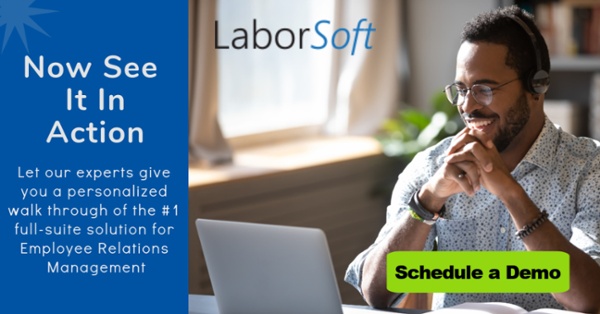Employee Relations Trends and Technology for 2024
Read Time 4 mins | Oct 3, 2023 | Written by: Frankie Kourtis

The last year has presented big challenges to HR and HR management. We've engaged with ongoing discussions about the transition of remote work from a temporary solution into a long-term strategy for the modern workplace. We've nagivated an evolving minimum wage debate as states mull over a permanent increase to $15 (or more) and employers consider how higher minimums will impact other roles in their organizations. More than half of employers (51%) plan to increase starting salaries in 2024 to attract highly skilled workers. The emergence of generative AI and increasingly powerful workplace automation solutions has businesses scrambling to uncover the best ways to leverage new technology.
HR departments need tools which can keep up with these challenges. Fortunately, labor and employee relations software has been evolving and improving as well. If 2023 got you thinking about the future of work, you're not alone. It's high time we rethink our HR technology for the digital-driven environment of 2024 and keep pace with the changing times.
5 Must-Have Features For Your HR Labor and Employee Management Software In 2024
1. Cloud-based access
Hopefully your HR software is already cloud-enabled, but if not, that should be one of your top priorities for your software upgrade. Dispersed and flexible workforces require connected (and collaborative) applications if they have any hope of meeting deadlines, remaining up to speed on projects and tasks, or report of productivity in real time. Critical business software needs to be accessible from anywhere, at any time, to ensure it's always available and employee relations software is no exception – if this isn’t the case, you’re already behind the times.
2. Easy tracking of incidents, accommodations, FMLA, and similar matters
As government adds more regulations and protections for workers, you need software capable of recording and tracking each individual incident. This is vital both for basic employee data analysis, but also for attaching solutions or resolutions to each incident. If something shows a need for more training or augmented responsibilities, for example, you should be able to 'attach' that training to the incident so that the effectiveness of the solution can be tracked going forward. This is also vital record-keeping to ensure you're always able to demonstrate adherence to regulations like FMLA or track absences and leaves. This not only provides the coverage needed but the historical data can prove valuable when predicting trends for forecasting.
3. Remote performance monitoring and management
One of the biggest fears shared by every company expanding its use of a remote workforce is that telecommuting will impact productivity. Does your current labor relations software even have the capability to track where employees are working from, and whether that's having an impact on their productivity?
Modern HR software gives you the tools to analyze performance and its relationship with working from home versus in the office, so that you can refine policies to minimize their impact on operations.
4. Tools to empower a geographically distributed, AI-enhanced workforce
Another challenge when a workforce is geographically distributed is keeping everyone happy, capable, and in alignment. It's not likely that you'll be able to please everyone, but the tools you have must help keep all workers on the same page while also evaluating their satisfaction with communication, collaboration, and flexibility in a remote work environment.
The charge of AI solutions into the workplace is exciting, and both artificial intelligence and automation stand to enhance decision-making, efficiency, and personalization. However, what's still got to be in the mix is a balance between human employees and AI technology. Your collaboration tools will be vital for onboarding, training, and strategizing in this AI-augmented environment. They're also critical for matters such as maintaining key deadlines for union activities or regulatory filings. The ideal HR software should include employee document repositories and expanded methods for collaboration between teams and HR, so that nothing slips through the cracks due to broken lines of communication.
Along the same lines, you also need to be able to easily evaluate changes in workplace status to workers. If - for example - your company puts a permanent and official hybrid work policy into action, you need a system that can help you keep tracking of how many workers are taking advantage of the policy, which roles seem to prefer to work in the office or at home, and what the overall level of satisfaction is with the new policy in its initial format.
5. Robust analytics for continuous improvement
Finally, it's not enough to collect employee data - you need to be able to work with it! The best employee relations software includes robust HR analytics and dashboards which will allow you to get quick at-a-glance overviews of your labor management situation, while also allowing you to dig deep into problem areas. And it’s not enough to have an out-of-the-box solution, these dashboards should be configurable to meet your specific business challenges.
The LaborSoft technology platform is one of many integral solutions that keeps your business in business. Our analytics, case management workflows, and our central repository of documentation streamlines case management to mitigate risk of operational bottlenecks, costly lawsuits, and legal ramifications stemming from HR issues and complaints. This sensitive data requires that maximum security protocols are in place and that your information is protected at all times.
Contact us for a customized demonstration and learn how LaborSoft can help you improve communications, build a more collaborative, safe, and supportive workplace, while reducing the likelihood of costly litigation.


